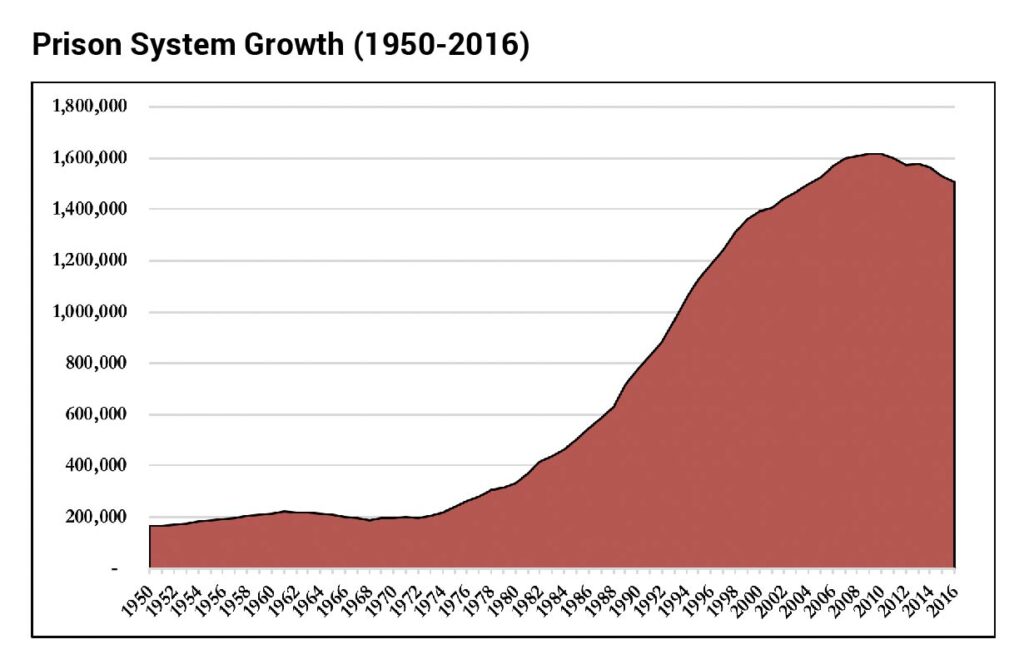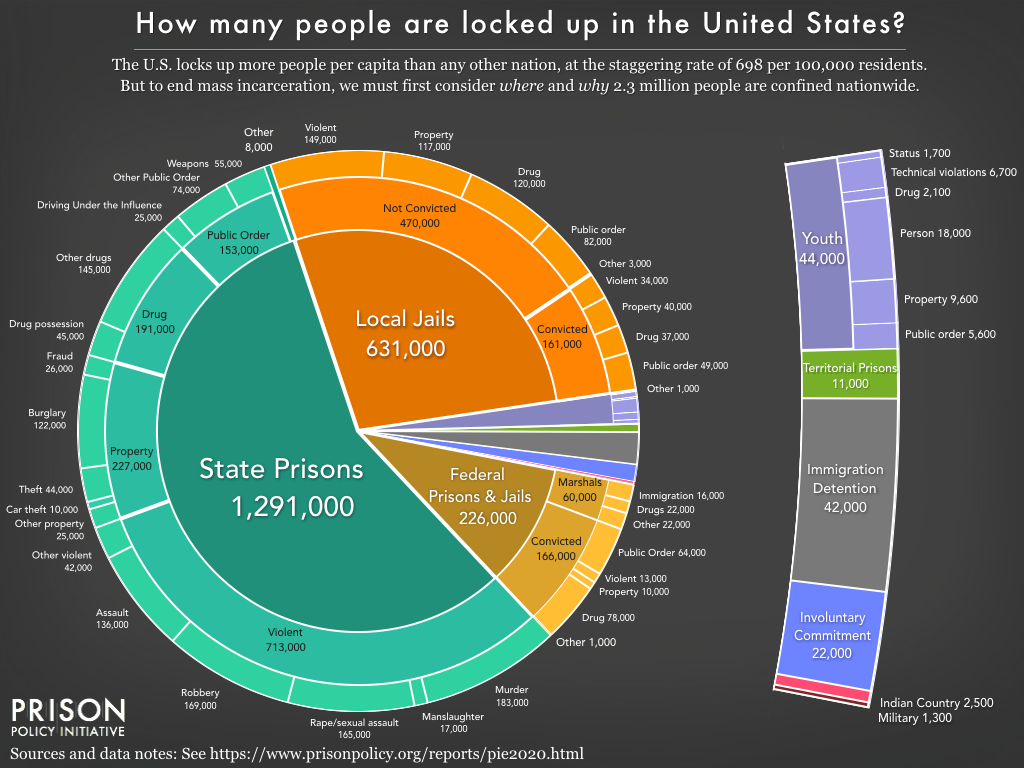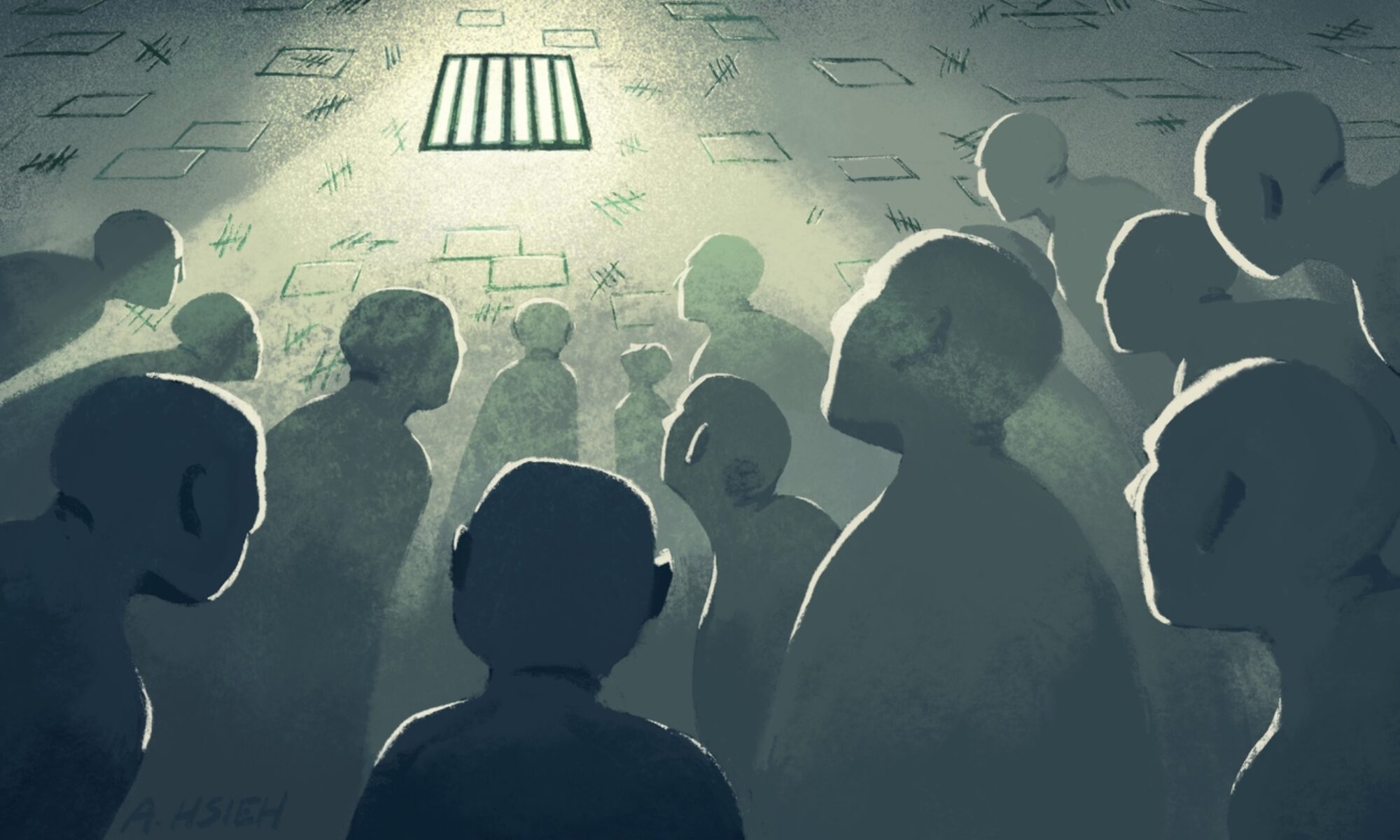In the past 50 years, the United States of America has developed a crisis. Since 1974, the number of people incarcerated in the United States has risen from approximately 200,000 individuals to over 1.6 million individuals. Mass incarceration is defined as the “comparatively and historically extreme rates of imprisonment and…concentration of imprisonment among young, African American men living in neighborhoods of concentrated disadvantage” in the United States. Mass incarceration began in the early 1970s when “tough on crime” rhetoric became popular amongst right-wing politicians. The republican party spearheaded legislation to combat growing rates of crime in the United States that led to a nearly exponential increase in the amount of Americans incarcerated, with Black Americans being targeted and imprisoned at alarmingly higher rates than White Americans. These high rates of incarceration frequently subject hundreds of thousands of people to physical and mental abuse, poor living conditions, and economic exploitation. Upon release, those with criminal records are often discriminated against when applying for jobs, loans, and housing. Many end up returning to prison in a matter of years.

(https://www.brennancenter.org)
Awareness of mass incarceration as an issue of our time has been recently returned to the spotlight of popular media as the Black Lives Matter movement once again grows in popularity with the American public. The tragic and unethical murders of George Floyd, Breonna Taylor, Elijah McClain and many others has spurred the American public to seek knowledge and education on racial justice issues such as police brutality and mass incarceration. Though in these teachings it is not often framed as an issue of sustainability, mass incarceration is in direct conflict with the tenets of sustainability, and poses a significant challenge to a sustainable future for both people and the planet.
By the working definition of myself and my colleagues, something is sustainable if its initiatives, actions or impacts serve to meet the social and economic needs of the present without compromising the ability of future generations to meet their own needs through: reducing resource use, encouraging re-use, finding renewable alternatives and minimizing waste and pollution while protecting and restoring the health of natural systems and biodiversity, and addressing global climate change
- equitable economic development that does not exploit humans.
- an elevated and dignified standard of human well-being that ensures basic human rights and needs that include universal access to healthcare, food and water, housing, economic dignity, fair wages and safe working conditions
Best practices for meeting these objectives include an inclusive, transparent process that employs systems thinking; encourages individual action and innovation and assessment using measurable indicators.
The principle of intersectionality in social justice work asserts that social justice issues are not individual problems to solve, but rather a network of connected problems fueled and upheld by the same systems of oppression. Environmental sustainability is a concept that has often been painted by corporate media to be purely an initiative to reduce consumption, eliminate excess waste and detoxify ecosystems. While all of these things are certainly facets of sustainability, they serve to distract from the broader scope of the challenges of sustainability that encompass the needs of the human beings and communities most affected by the disasters of the climate crisis and unsustainable practices. This approach neglects the intersections of sustainable initiatives with other social justice issues. It is here that we must begin our discussion of mass incarceration.
The United States of America incarcerates more people than any other country in the world- both (per capita and in absolute numbers). In fact, almost one out of every hundred people living in the United States is either imprisoned or jailed. When we also consider the fact that Black Americans are incarcerated at a rate more than five times that of White Americans, we see that yet another key issue, racial justice, is at play here. Prisons are often built on overworked and otherwise undesirable land, leading to polluted, toxic water, poor air quality, and more vulnerability to climate induced natural disasters. This means that the effects of climate chaos that affect prisons are more strongly felt by Black communities than White ones.

On top of this, it is abundantly clear that prisons are not setting incarcerated individuals up for success or rehabilitation. Approximately 650,000 people return to their communities from prison each year and about half of them return to prison within a few years4. It has also been found that almost 75% of formerly incarcerated people are unemployed a year after their release3. Prisons are doing nothing but harm for a large portion of those they house. These arguments are strong evidence that the system of mass incarceration is in direct conflict with our definition of sustainability. For this reason, I will be using this website to continue my exploration of the problem of mass incarceration within the context of sustainability.
To begin exploring solutions to a problem so large, we must first identify any stakeholders. A stakeholder is any party with involvement or interest in a system. In the case of mass incarceration, there exist quite a few stakeholders. Prisoners and their families, law enforcement officers, private prison companies, crime victims and their families, local officials, state officials and federal officials would likely all be involved in a conversation about this issue. Additionally, any lobbyists or politicians that benefit or are harmed due to certain aspects of potential solutions would be involved as this exploration continues to unfold. This is, of course, only a starting point. As I continue my research and begin expanding upon individual facets of mass incarceration, I will delve deeper into stakeholder and systems approaches to sustainable problem solving.
Citations
- https://www.oxfordbibliographies.com
- https://www.aclu.org
- 2
- https://www.prisonpolicy.org
- https://www.sentencingproject.org
